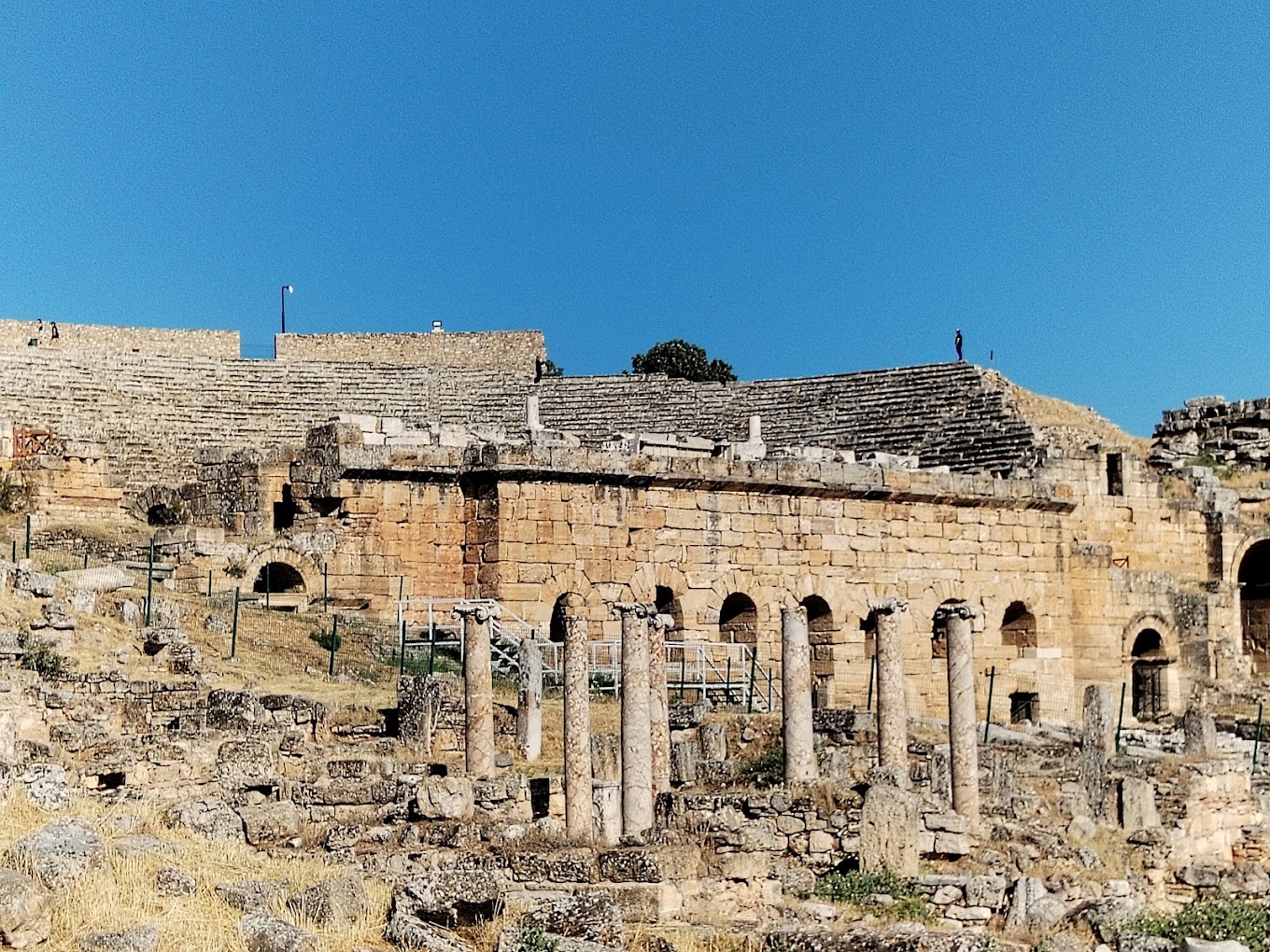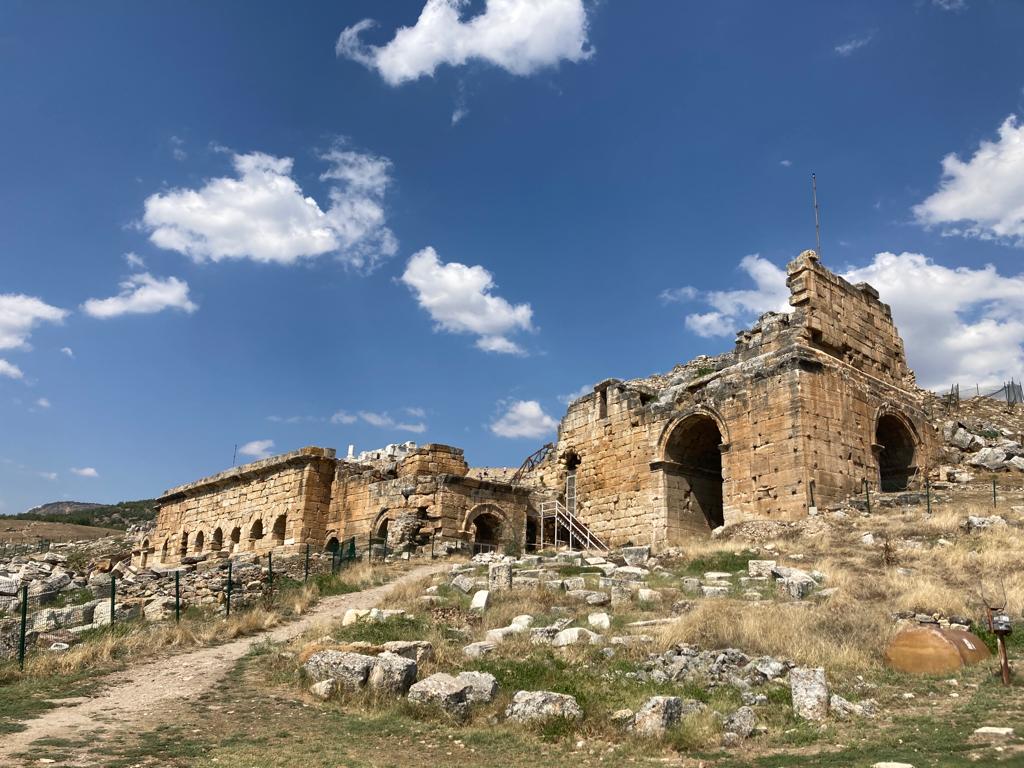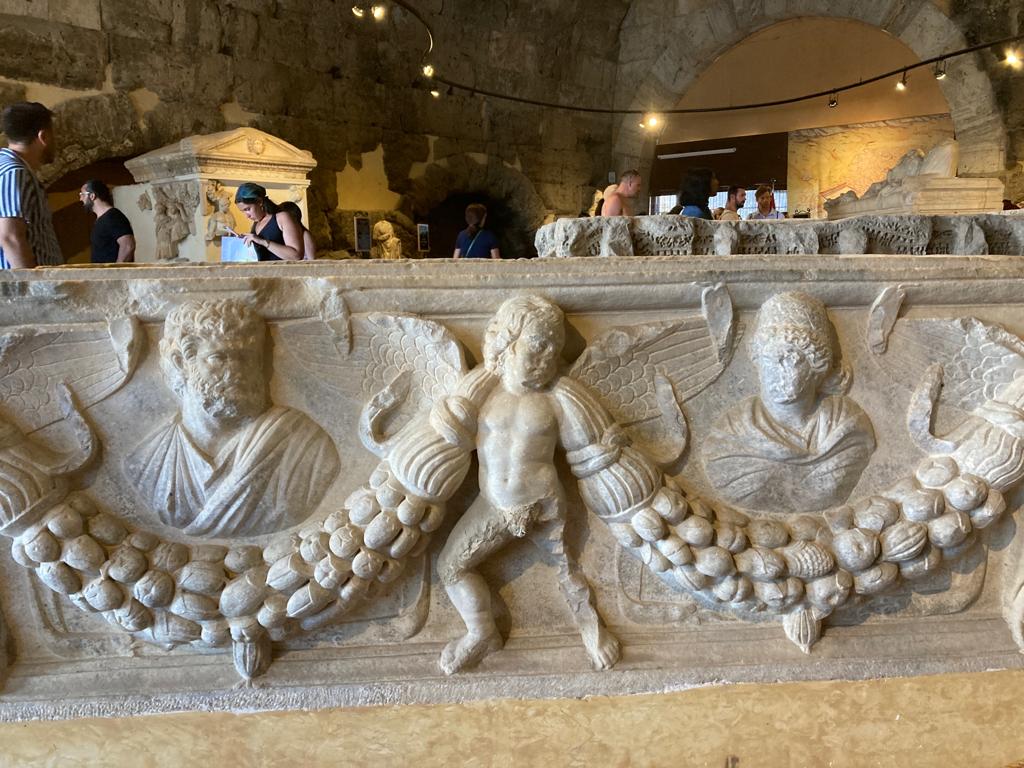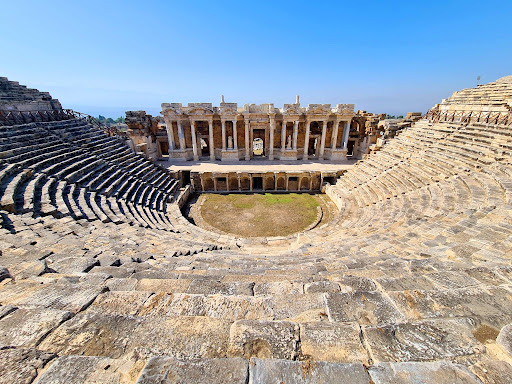Are you ready to embark on a journey through time in the captivating atmosphere of the Hierapolis Ancient Theatre? This unique site is not just an ancient structure, but a stage that has witnessed the passage of time. With its architectural details and historical background, this theatre is not only a point of interest but also a source of inspiration for my discoveries. In this writing, I will share many details with you, from the theatre’s history and architectural features to the events held here and the surrounding historical sites. Let’s get lost together in this historical atmosphere!

The History of the Hierapolis Ancient Theatre
Hierapolis, one of the most impressive cities of the ancient world, has hosted many civilizations throughout history. When I was there, I felt the striking atmosphere of this fascinating place and must share it with you. Founded in the 3rd century BC, this ancient city flourished during the Roman Empire. At that time, the theatre, which was the center of cultural and social life, was an essential part of the city.
The construction of the theatre highlights the Romans' appreciation for art and entertainment. With a capacity of around 12,000 people, it is believed that thousands of individuals gathered here to watch performances. Although the theatre has been damaged by natural disasters and wars over time, restoration efforts have allowed this valuable structure to survive to the present day.
While carrying traces of cultural history, the events held here also occupy an important place. Many historical events and performances staged here throughout the ages form a part of the fascinating story of this place. Standing in such a place and feeling the echoes of the past is truly mesmerizing. You can easily find yourself immersed in this historical journey, not realizing how time passes.

Architectural Features of the Theatre
When I visited the Hierapolis Ancient Theatre, I was thrilled to see its elegance and grandeur with my own eyes. Dating back to the 2nd century BC, this impressive structure embodies the architectural features of the Roman period. With a capacity of 10,000 people, the theatre was not just a stage, but also one of the social centers of the time. The arrangement and design of the stairs allowed the audience to hear the sounds very clearly, while the stage structure was designed to present the performances in the best possible way.
The multi-story side walls demonstrate how advanced Roman construction techniques were. The theatre captivated me with its columns and reliefs. Also, I can imagine how the sounds echoing behind the theatre, along with the songs, created unforgettable moments for the audience.
Looking a bit deeper into the theatre’s architectural structure, I could see how the stones were expertly assembled. The materials used increased the building's durability, allowing it to withstand the test of time. Indeed, the Hierapolis Ancient Theatre is not just a structure but also a historical artifact and a cultural heritage.

Events at the Hierapolis Ancient Theatre
When I first stepped into the Hierapolis Ancient Theatre, I realized that this was not just a ruin, but also a vibrant cultural meeting point. Over time, this magnificent structure has hosted various events, allowing visitors to enjoy history in a lively atmosphere. Especially during the summer, concerts and theatre performances make the time spent here unforgettable.
Every summer, performances are held by local artists as well as international names. I also attended one of these events, and the experience of enjoying music in this ancient venue was truly unique. The bond between the audience and the performers, coupled with the breathtaking views, makes you forget how time flies.
Additionally, seminars and workshops organized by archaeologists and historians offer a great opportunity to learn more about ancient civilizations. I am eagerly looking forward to taking an active role in such events. The magic of the ancient theatre continues to this day; each event forms a bridge between the past and present, offering us a historical experience.

The Hierapolis Ancient Theatre and Other Historical Sites Around It
When I visited the Hierapolis Ancient Theatre, I noticed how impressive the surrounding historical sites were. This area is not just a theatre but also houses many significant structures. Among the other sites to visit are the streets filled with the ruins of the ancient city, bath complexes, and a massive necropolis.
Pamukkale Travertines
Right next to the ancient city, the stunning pamukkkalee travertines of Pamukkale amazed me. The warm water pools on the white calcium formations were a whole different experience. This natural beauty blends with the spirit of the ancient theatre, offering visitors a history book-like experience.
The Ancient Pool
The Ancient Pool, formed by the warm waters, was one of the most enjoyable moments of my trip. Swimming among the marble stones from the ancient period offered a historical experience. Here, I both witnessed the past and had a great opportunity to cool off.
Hierapolis Apollon Temple
Next to the theatre is the Hierapolis Apollo Temple, dedicated to Apollo, the son of Zeus. With its dazzling architecture and impressive statues, this is also a must-see place. Both historically and religiously significant, it is a place of great importance.
All of these sites further deepen the fascinating atmosphere of the ancient world. During my visit, feeling the energy of the historical sites took me on a brief journey to the past. Especially the proximity of these historical treasures made my trip much more convenient. Therefore, I recommend that everyone visiting Hierapolis also explore these unique structures nearby.


 English
English Türkçe
Türkçe